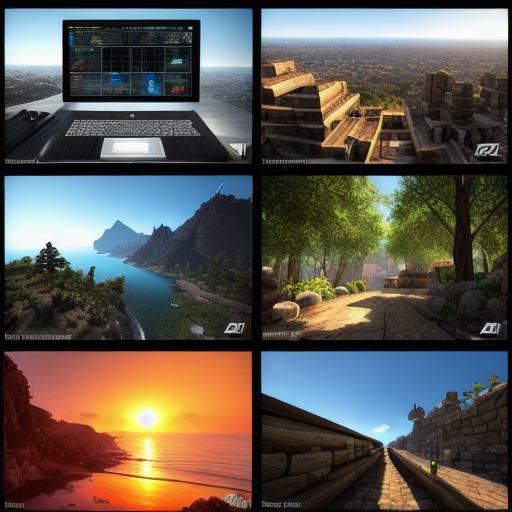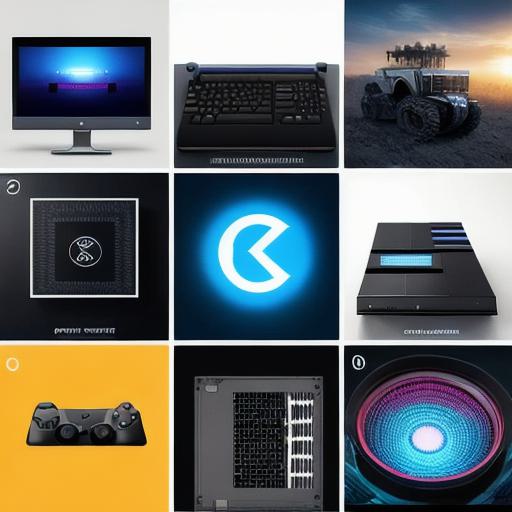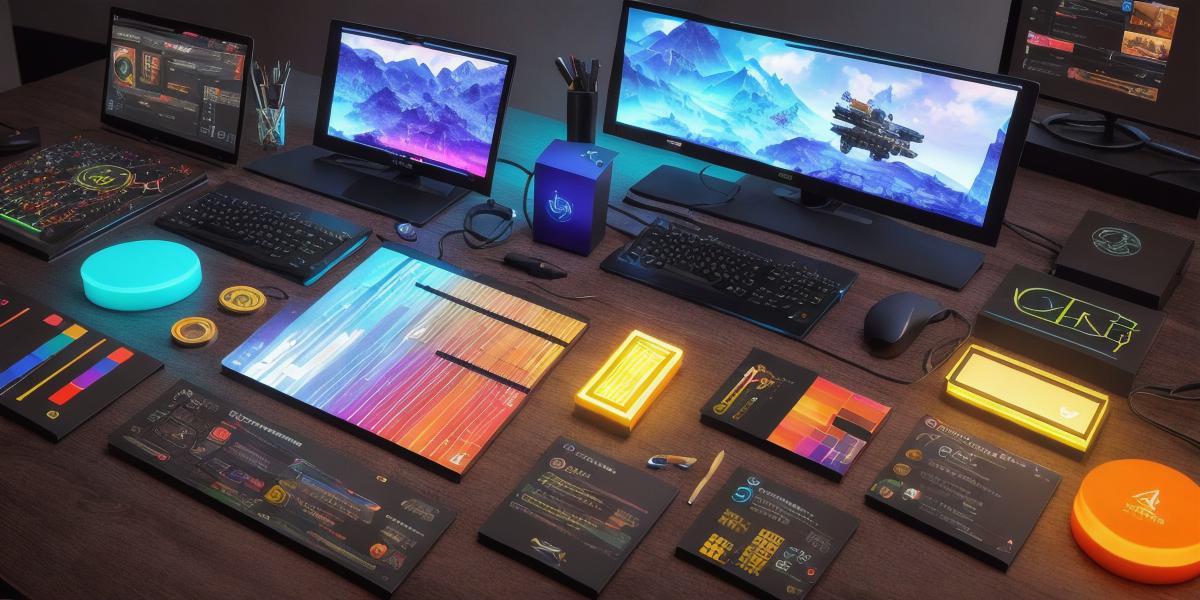The game development industry has witnessed significant advancements in technology, tools, and techniques over the years. As a result, game developers now have a wide array of powerful and efficient tools to choose from when creating games. In this comprehensive guide, we will explore the top game development tools for 2021 and how they can help game developers create immersive and engaging games.
Introduction
Game development is a complex process that requires a diverse set of skills and tools. From designing the game mechanics to creating the graphics, sound effects, and game world, game developers need the right tools to bring their ideas to life. In this article, we will examine the top game development tools for 2021 and explore their features, benefits, and applications.
Unity: The Most Popular Game Engine
Unity is one of the most popular game engines in use today. It offers a wide range of features that make it an ideal choice for both beginners and experienced game developers. Some of the key features of Unity include its cross-platform support, intuitive user interface, and extensive library of assets and plugins.
Unity supports a variety of platforms including Windows, macOS, Linux, iOS, Android, web browsers, and consoles such as PlayStation 4 and Xbox One. This means that game developers can create games once and publish them across multiple platforms without having to start from scratch.
In addition to its cross-platform support, Unity also offers an intuitive user interface that makes it easy for game developers to navigate the engine and find what they need quickly. Unity’s extensive library of assets and plugins also makes it easier for game developers to add features such as physics engines, AI systems, and graphics effects to their games without having to write complex code from scratch.
Unreal Engine: Another Powerful Game Engine
Another powerful game engine that is gaining popularity among game developers is Unreal Engine. Like Unity, Unreal Engine supports multiple platforms including Windows, macOS, Linux, iOS, Android, and consoles such as PlayStation 4 and Xbox One. It also offers a wide range of features that make it an excellent choice for both beginners and experienced game developers.

One of the key features of Unreal Engine is its support for real-time rendering. This means that game developers can create high-quality graphics and animations in real-time, which makes it easier to test and iterate on game mechanics and design elements.
Unreal Engine also offers a powerful physics engine that allows game developers to add realistic physics effects to their games. It also includes a variety of AI tools that make it easier for game developers to create intelligent and responsive NPCs (non-player characters) and enemies.
Visual Studio Code: The Ideal IDE for Game Development
Visual Studio Code is an open-source integrated development environment (IDE) that has become increasingly popular among game developers in recent years. It offers a wide range of features that make it an ideal choice for game development, including its support for multiple programming languages, debugging tools, and extension libraries.
One of the key benefits of using Visual Studio Code for game development is its lightweight and fast performance. This makes it easy for game developers to work on large codebases without experiencing any slowdowns or crashes.
Visual Studio Code also offers a variety of debugging tools that make it easier for game developers to identify and fix bugs in their code. It also includes support for popular game development tools such as Unity, Unreal Engine, and Godot, making it easier for game developers to work with these engines directly from within the IDE.
Git: The Version Control System of Choice for Game Developers
Git is a distributed version control system that has become widely used in the game development industry. It allows game developers to track changes to their code and collaborate on projects with other team members easily. Git also provides a history of all code changes, making it easy for game developers to revert changes if necessary or review previous versions of the codebase.
One of the key benefits of using Git for game development is its ability to handle large codebases efficiently. This means that game developers can work on their projects without worrying about slow performance or data loss.
Git also provides a powerful branching and merging system that makes it easier for game developers to collaborate on projects with other team members. This allows them to work on different features and changes simultaneously, which can speed up the development process significantly.
Blender: The Ultimate 3D Creation Tool
Blender is a powerful 3D creation tool that is widely used in the game development industry. It offers a wide range of features that make it an excellent choice for creating 3D models, textures, animations, and more. Some of the key features of Blender include its support for multiple file formats, real-time rendering, and its extensive library of add-ons and plugins.
Blender’s support for multiple file formats makes it easy for game developers to import and export 3D assets from other tools and engines. This means that game developers can work with a variety of 3D creation tools without having to learn new skills or workflows.
Blender’s real-time rendering capabilities also make it easier for game developers to create high-quality graphics and animations in real-time. This allows them to test and iterate on game mechanics and design elements quickly, which can speed up the development process significantly.
Case Studies: How Top Game Development Tools are Being Used in Real-World Projects
Now that we have explored the top game development tools for 2021 let’s take a look at some real-world case studies to see how these tools are being used in practice.
Unity: Realizing the Vision of “Inside”
Inside is an innovative virtual reality (VR) game that was created using Unity. The game tells the story of a nameless boy who wakes up inside a mysterious VR world and must explore and solve puzzles to escape.

One of the key features of Inside is its use of real-time rendering, which allows players to experience immersive and interactive environments in real-time. This was achieved using Unity’s advanced graphics and physics engines, as well as its support for VR platforms such as Oculus Rift and HTC Vive.
Unreal Engine: Bringing "Fortnite" to Life
Fortnite is one of the most popular battle royale games in use today. It was created using Unreal Engine and has become a cultural phenomenon with millions of players worldwide.
One of the key features of Fortnite is its use of real-time rendering, which allows players to experience immersive and interactive environments in real-time. This was achieved using Unreal Engine’s advanced graphics and physics engines, as well as its support for high-performance consoles such as PlayStation 4 and Xbox One.
Visual Studio Code: Powering the Development of “Genshin Impact”
Genshin Impact is an action role-playing game that was created using Visual Studio Code. The game takes place in a vast open world filled with magic, monsters, and adventure.
One of the key features of Genshin Impact is its use of Visual Studio Code for development. This allowed the team to work on large codebases efficiently and collaborate easily with other team members using Git for version control.
Git: Managing the Complexities of “Civilization VI”
Civilization VI is a complex strategy game that was created using Git for version control. The game allows players to build civilizations, explore new worlds, and engage in battles with other civilizations.
One of the key features of Civilization VI is its use of Git for version control. This allowed the team to manage the complexity of the codebase efficiently and collaborate easily with other team members using branching and merging techniques.
Blender: Creating the World of “The Legend of Zelda: Breath of the Wild”
The Legend of Zelda: Breath of the Wild is a highly immersive action-adventure game that was created using Blender for 3D creation. The game takes place in an expansive open world filled with magic, monsters, and adventure.
One of the key features of The Legend of Zelda: Breath of the Wild is its use of Blender for 3D creation. This allowed the team to create highly detailed environments, characters, and objects using Blender’s advanced modeling and animation tools.
Summary: Top Game Development Tools for 2021
In conclusion, the top game development tools for 2021 include Unity, Unreal Engine, Visual Studio Code, Git, and Blender. These tools offer a wide range of features that make them ideal for game development, including their support for multiple programming languages, debugging tools, version control systems, and 3D creation tools.
By using these top game development tools, game developers can create highly immersive and interactive environments, characters, and objects that engage players worldwide.



